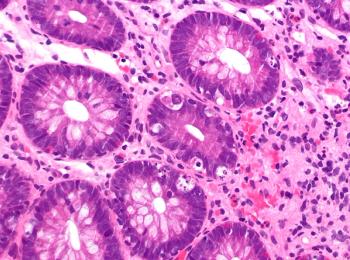
Minimal Residual Disease Evaluation Could Improve ALL Treatment
Patients with pediatric BCR-ABL1-like acute lymphoblastic leukemia should be given risk-directed therapy based on minimal residual disease levels, according to a new study.
Patients with pediatric BCR-ABL1-like acute lymphoblastic leukemia (ALL) should be given risk-directed therapy based on minimal residual disease levels measured during and at the end of remission induction therapy, according to the results of a study published recently in the Journal of Clinical Oncology.
BCR-ABL1-like ALL is a recently identified subtype of B-cell ALL that is similar to Philadelphia-chromosome ALL but does not have the BCR-ABL1 fusion protein.
“Similar to Ph-positive ALL, BCR-ABL1–like ALL is characterized by a high frequency of alterations of the IKZF1 gene, which encodes the early lymphoid transcription factor IKAROS, and a high risk of relapse when treated with conventional chemotherapy,” wrote researchers led by Kathryn G. Roberts, MD, of St. Jude Children’s Research Hospital.
Therefore, in this study, Roberts and colleagues sought to examine outcomes when children with BCR-ABL1–like ALL were given risk-directed therapy based on minimal residual disease levels during remission induction. They enrolled 422 patients with B-cell ALL from the Total Therapy XV study between 2000 and 2007, of whom 344 had adequate samples for gene expression profiling.
Patients were stratified based on presenting age and leukocyte count, leukemic cell genotype, and response to remission induction treatment. Patients were initially assigned to the low-risk group if they were between 1 and 10 years old, had a leukocyte count less than 50 x 109/L, and had a leukemic cell DNA index of 1.16 or greater or t(12;21) [ETV6-RUNX1]. High-risk patients were those with t(9;22) [BCR-ABL1]. Any remaining patients, including those with T-cell ALL and B-cell ALL with t(1;19) [TCF3-PBX1] were classified as standard-risk ALL.
Patients were then further classified by minimal residual disease:
Standard-risk: Any patient with 1% or greater leukemic cells in the bone marrow on day 19 of remission induction or 0.01% to 0.99% residual leukemia after completion of 6-week induction therapy.
High-risk: Patients with 1% or more residual disease after completion of induction therapy.
BCR-ABL1-like ALL was identified in 11.6% of the patient population. These patients were significantly more likely to be male (P = .04), have Down syndrome (P = .003), and have higher minimal residual disease levels of day 19 (P = .009) and at the end of induction (P = .001).
When patients were classified using the initial risk stratification or the NCI risk stratification no significant differences were found between patients with BCR-ABL1-like ALL and other patients with B-cell ALL. However, the researchers found that when risk by minimal residual disease was applied, patients with BCR-ABL1-like ALL were more likely to be classified as having standard- or high-risk disease (P = .02).
“In a risk classification schema based solely on the presenting age, initial leukocyte count, and conventional cytogenetic and molecular genetic features, approximately 60% of our patients would have been treated as having low-risk ALL,” the researchers wrote. “Thus, many of the patients with BCR-ABL1–like ALL in the other series with resistant leukemia might not have received intensive treatment because they were not recognized as a result of a lack of response evaluation.”
Next generation sequencing found that 11 patients with BCR-ABL1-like ALL had genomic rearrangement of CRLF2, including nine with P2RY8-CRLF2 and one with IGH-CRLF2. In addition, six patients were found to have fusion transcripts responsive to ABL tyrosine kinase inhibitors of JAK inhibitors. Seven patients had mutations involving the RAS pathway.
“Despite inferior response to remission induction therapy as shown by overall higher levels of minimal residual disease, patients with BCR-ABL1–like ALL did not have a significantly inferior event-free survival or overall survival compared with patients with other B-ALL subtypes,” the researchers wrote.
Patients with BCR-ABL1-like ALL had similar 5-year event-free survival rates (90% vs 88.4%) and overall survival rates (92.5% vs 95.1%) to patients with other types of B-cell ALL. However, those patients with minimal residual disease of more than 5% on day 19 of remission had worse event-free survival (66.7% vs 96.7%; P = .006) and overall survival (77.8% vs 13%; P = .008) compared with patients with lower residual disease.
“In summary, the advances in cure rates brought about by contemporary minimal residual disease-based treatment of childhood ALL have extended to patients with BCR-ABL1–like ALL despite their initial inferior response to treatment,” the researchers wrote. “Identification of this ALL subtype and administration of targeted therapy may further improve overall cure rates beyond 90% achieved in some of the contemporary clinical trials and improve their quality of life.”
Newsletter
Stay up to date on recent advances in the multidisciplinary approach to cancer.

















































































